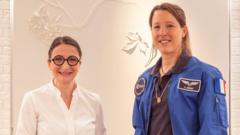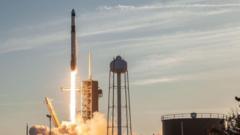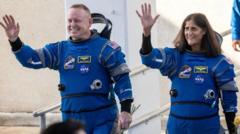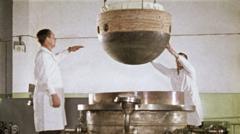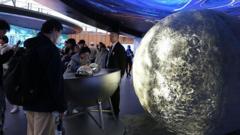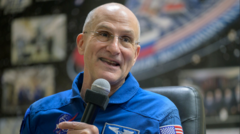Scientists explore sustainable food alternatives for long-term space missions, potentially transforming culinary possibilities in orbit.
**Space Agriculture: Pioneering Food Growth in Low Gravity**
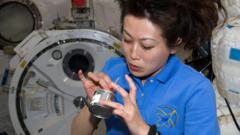
**Space Agriculture: Pioneering Food Growth in Low Gravity**
A revolutionary experiment aims to cultivate lab-grown food in space to support future astronauts.
In a groundbreaking endeavor, a European Space Agency (ESA) experiment has launched into orbit with the goal of cultivating lab-grown food in space. This innovative project is investigating the feasibility of producing nutritious meals from singular cells, essential for sustaining astronauts during long missions and potentially paving the way for human colonization of other planets.
The project, funded by the ESA, aims to address the exorbitantly high costs associated with feeding astronauts, estimated at £20,000 daily per individual. Given the ambitious goals set by NASA and other space bodies for long-term extraterrestrial habitats—such as colonies on the Moon and future missions to Mars—developing sustainable food production methods has become a priority. According to Dr. Aqeel Shamsul, CEO of Frontier Space, this initiative represents the first step toward establishing small-scale food manufacturing facilities aboard the International Space Station (ISS) within the next two years.
Current freeze-dried food options for astronauts are limited and leave much to be desired in terms of taste. However, lab-grown food presents a new frontier whereby ingredients like proteins and fats are cultivated in bioreactors and processed to resemble traditional meals. Though lab-grown chicken is available in parts of the world, lab-grown steak awaits regulation in the UK and Israel. On Earth, this technology promises environmental benefits by maximizing land use and minimizing greenhouse gas emissions, but the primary driver for this research in space is to alleviate food transport costs.
The ESA mission involves sending a miniaturized bioreactor aboard a SpaceX Falcon 9 rocket to assess whether food can be grown effectively under the unique conditions of microgravity and increased radiation. The mission will orbit Earth for approximately three hours before splashing down near Portugal, where researchers will analyze the results to inform future experiments and bioreactor designs.
Dr. Rodrigo Ledesma-Amaro, a director at Imperial College, has emphasized the capability of producing various food components using this method, making a diverse dietary range for astronauts more achievable. Imperial College has brought culinary expertise into the project, with chef Jakub Radzikowski developing recipes using naturally occurring ingredients until regulatory approval for lab-grown components is granted.
Helen Sharman, the UK's first astronaut, had the opportunity to taste-test creations inspired by this pioneering work. Describing the flavor of innovative dishes as "gorgeous," she noted that lab-grown options could not only enhance flavor variety for astronauts but also contribute positively to their nutritional health, vital during extended missions in space.
As the initiative moves forward, the prospect of enjoying a wider culinary variety in space, including familiar dishes from around the globe, demonstrates a remarkable evolution in how we think about food beyond Earth. With ongoing research, lab-grown food may very well shape the future of space exploration and habitation.
The project, funded by the ESA, aims to address the exorbitantly high costs associated with feeding astronauts, estimated at £20,000 daily per individual. Given the ambitious goals set by NASA and other space bodies for long-term extraterrestrial habitats—such as colonies on the Moon and future missions to Mars—developing sustainable food production methods has become a priority. According to Dr. Aqeel Shamsul, CEO of Frontier Space, this initiative represents the first step toward establishing small-scale food manufacturing facilities aboard the International Space Station (ISS) within the next two years.
Current freeze-dried food options for astronauts are limited and leave much to be desired in terms of taste. However, lab-grown food presents a new frontier whereby ingredients like proteins and fats are cultivated in bioreactors and processed to resemble traditional meals. Though lab-grown chicken is available in parts of the world, lab-grown steak awaits regulation in the UK and Israel. On Earth, this technology promises environmental benefits by maximizing land use and minimizing greenhouse gas emissions, but the primary driver for this research in space is to alleviate food transport costs.
The ESA mission involves sending a miniaturized bioreactor aboard a SpaceX Falcon 9 rocket to assess whether food can be grown effectively under the unique conditions of microgravity and increased radiation. The mission will orbit Earth for approximately three hours before splashing down near Portugal, where researchers will analyze the results to inform future experiments and bioreactor designs.
Dr. Rodrigo Ledesma-Amaro, a director at Imperial College, has emphasized the capability of producing various food components using this method, making a diverse dietary range for astronauts more achievable. Imperial College has brought culinary expertise into the project, with chef Jakub Radzikowski developing recipes using naturally occurring ingredients until regulatory approval for lab-grown components is granted.
Helen Sharman, the UK's first astronaut, had the opportunity to taste-test creations inspired by this pioneering work. Describing the flavor of innovative dishes as "gorgeous," she noted that lab-grown options could not only enhance flavor variety for astronauts but also contribute positively to their nutritional health, vital during extended missions in space.
As the initiative moves forward, the prospect of enjoying a wider culinary variety in space, including familiar dishes from around the globe, demonstrates a remarkable evolution in how we think about food beyond Earth. With ongoing research, lab-grown food may very well shape the future of space exploration and habitation.


